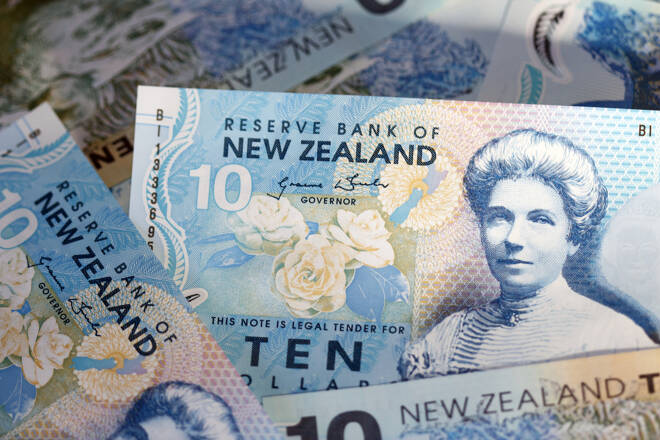Advertisement
Advertisement
NZD/USD Moves Higher After RBNZ Lifts Interest Rate To 3%
By:
Meanwhile, USD/JPY tries to gain additional upside momentum after economic reports highlight a surge in imports.
Key Insights
- New Zealand dollar enjoyed support after a rate hike and hawkish commentary from RBNZ.
- AUD/USD remains stuck near 0.7000 as traders wait for additional catalysts.
- USD/JPY traders will likely stay focused on Japan’s trade deficit.
New Zealand dollar is in spotlight today after RBNZ Interest Rate Decision. Traders can also expect some activity in the Japanese yen as the surge in imports exceeded analyst expectations.
NZD/USD
NZD/USD received support after RBNZ increased the interest rate from 2.5% to 3.0%. The Bank’s commentary was hawkish.
RBNZ noted that demand in the New Zealand economy remained strong, while the significant increase in international visits provided additional support to demand in the tourism and hospitality sectors.
At the same time, labor and materials shortages contributed to inflation. The country’s Unemployment Rate remained at just 3.3%. In this situation, RBNZ believes that “higher interest rates are needed to meet our inflation and employment objectives.”
RBNZ stated that core consumer price inflation remained too high, so it was necessary to tighten monetary conditions. Put simply, RBNZ will likely continue to raise the interest rate in order to fight inflation. This is bullish for NZD/USD.
AUD/USD
AUD/USD failed to gain sustainable upside momentum after the release of RBA minutes and continues to trade near the 0.7000 level.
Today, traders will remain focused on the dynamics of commodity markets, which may provide some support to commodity-related currencies, including Australian dollar.
While the support at 0.7000 looks strong, a move below this level may lead to a sell-off.
USD/JPY
Today, USD/JPY traders had a chance to take a look at the latest Exports and Imports data from Japan.
Exports increased by 19% year-over-year in July, while Imports grew by as much as 47.2%. Rising energy prices and weak yen contributed to the surge in Imports. The current trade deficit does not look good for an export-oriented economy.
Traders also focused on the Machinery Orders report, which indicated that Machinery Orders increased by 0.9% month-over-month. Analysts expected that Machinery Orders would grow by 1.3%. On a year-over-year basis, Machinery Orders grew by 6.5%. It looks that the weak yen has also put some pressure on Machinery Orders.
For a look at all of today’s economic events, check out our economic calendar.
About the Author
Vladimir Zernovauthor
Vladimir is an independent trader, with over 18 years of experience in the financial markets. His expertise spans a wide range of instruments like stocks, futures, forex, indices, and commodities, forecasting both long-term and short-term market movements.
Advertisement
